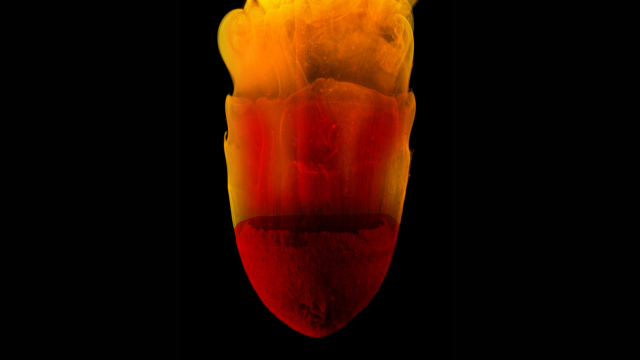You might think of meteors as flashes in the sky that result in lumpy-looking meteorites on the ground. But not all meteorites are lumps. A substantial population, like the leftovers from the 2013 Chelyabinsk airburst, are notably conical. One team of scientists thinks they know why.
A group of New York University researchers study how things on Earth get their shapes through the forces like erosion and eruption. They noticed in their past experiments that a fixed hunk of clay formed into a cone shape as water flowed past it. They they could apply this story to meteorites.
“We now have a self-consistent story behind these conical meteorites,” the study’s corresponding author, Leif Ristroph, told Gizmodo. “Erosion forms a cone and by happy coincidence, the cone it likes to carve is also stable in flight.”
There’s a long history of scientists trying to understand how different shapes travel through viscous things like air or liquid and the NYU team stared by studying water flowing past clay, which eroded the clay into cones. Meteorites travelling through the air are more similar to this setup than you might think, since both involve a soft object with a fluid-like force travelling past them.
But they’re different in an important way: The clay in their first experiment was in a fixed position as the water swept past it, but meteors travel through the air. So researchers designed an experiment to study how these conical meteorites form.
For the newest phase of the experiment, researchers dropped lots of small cones varying angles into a 60cm tall water tank. Cones that were too skinny flipped over or tumbled, and cones that were too wide fluttered and rocked like a falling leaf. But cones with just the right angle, between 30 to 50 degrees, kept their orientation as they landed, according to the paper published in the Proceedings of the National Academy of Sciences. These are the cones that look a lot like the cone-shaped specimens that meteorite hunters have found.
But the experiment doesn’t answer everything. For example, does the air erode the hot space rock into a stabilised cone shape that falls to the ground, or do these objects enter the atmosphere as already the right-shaped cones? These are questions the researchers hope to answer next, the study’s first author, Khunsa Amin, told Gizmodo.
Still, it’s something to appreciate about nature — somehow, there are meteors that maintain the same orientation as they plummet to Earth, and we have physics to thank for it.
